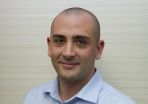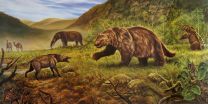Study looks at falls from furniture by children in their homes
2014-12-01
(Press-News.org) Parents of children who fell at home were more likely not to use safety gates and not to have taught their children rules about climbing on things in the kitchen, according to a study published online by JAMA Pediatrics.
Falls send more than 1 million children in the United States and more than 200,000 children in the United Kingdom to emergency departments (EDs) each year. Costs for falls in the U.S. were estimated at $439 million for hospitalized children and $643 million for ED visits in 2005. Most of the falls involve beds, chairs, baby walkers, bouncers, changing tables and high chairs, according to the study background.
Denise Kendrick, D.M., of the University of Nottingham, England, and colleagues aimed to quantify the associations between modifiable risk factors and falls from furniture by young children. The study involved 672 children, up to age 4 years, with falls from furniture who ended up in the ED, admitted to the hospital or treated in another setting. The study also included 2,648 control participants of the same age without a medically attended fall on the date of another child's injury.
The study results show that in most of the cases, the children (86 percent) sustained single injuries; the most common were bangs on the head (59 percent), cuts and grazes not requiring stitches (19 percent) and fractures (14 percent). Most cases (60 percent) were seen and examined but did not require treatment; 29 percent were treated in the ED, 7 percent were treated and discharged with follow-up appointments, and 4 percent were admitted to the hospital.
Parents of children who fell were more likely than the parents of control participants to not use safety gates and not have taught their children rules about climbing on objects in the kitchen. Children (up to 1 year of age) who fell were more likely to have been left on raised surfaces, had their diapers changed on raised surfaces and been put in car/bouncing seats on raised surfaces. Children 3 years and older who fell were more likely to have played or climbed on furniture.
"If our estimated associations are causal, some falls from furniture may be prevented by incorporating fall-prevention advice into child health surveillance programs, personal child health records, home safety assessments and other child health contacts. Larger studies are required to assess association between use of bunk beds, baby walkers, playpens, stationary activity centers and falls," the study concludes.
INFORMATION:
(JAMA Pediatr. Published online November 24, 2014. doi:10.1001/jamapediatrics.2014.2374. Available pre-embargo to the media at http://media.jamanetwork.com.)
Editor's Note: This article presents independent research funded by a grant from the National Institute for Health Research through its Program Grants for the Applied Research Program. Please see article for additional information, including other authors, author contributions and affiliations, etc.
Media Advisory: To contact study author Denise Kendrick, D.M., email denise.kendrick@nottingham.ac.uk
ELSE PRESS RELEASES FROM THIS DATE:
2014-12-01
PROVIDENCE, R.I. [Brown University] -- If decades of effort to bring more underrepresented minority students into science, technology, engineering and mathematics (STEM) fields were considered a grand chemistry experiment, then the modest results would suggest that while the formula may not be wrong, it may well be incomplete, according to a new article in the journal CBE-Life Sciences Education.
"I don't necessarily want to say that we've been doing it wrong all along, it's just that there are other ideas we can bring in," said lead author Andrew G.Campbell, a Brown ...
2014-12-01
Turn on any local TV weather forecast and you can get a map of where skies are blue or cloudy. But for scientists trying to figure out how clouds affect the Earth's environment, what's happening inside that shifting cloud cover is critical and hard to see.
To investigate the layers and composition of clouds and tiny airborne particles like dust, smoke and other atmospheric aerosols, , scientists at NASA's Goddard Space Flight Center in Greenbelt, Maryland have developed an instrument called the Cloud-Aerosol Transport System, or CATS. The instrument, which launches to ...
2014-12-01
NASA's Hurricane and Severe Storms Sentinel, or HS3, mission investigated four tropical cyclones in the 2014 Atlantic Ocean hurricane season: Cristobal, Dolly, Edouard and Gonzalo. The storms affected land areas in the Atlantic Ocean Basin and were at different stages during the investigations.
The HS3 mission pilots flew a remotely piloted Global Hawk aircraft over Cristobal, Dolly, and Edouard and flew a manned WB-57 aircraft over Gonzalo. During the flights, Cristobal transitioned from a hurricane into an extra-tropical storm. Edouard strengthened from a tropical storm ...
2014-12-01
December 1, 2014 --Years after the end of the Great Recession, child poverty remains widespread in America's largest cities. A paper just released by the National Center for Children in Poverty (NCCP), a research center based at Columbia University's Mailman School of Public Health, reports that nearly three children in five living in Detroit are poor, according to the most recent Census figures. This rate has grown by 10 percentage points since the onset of the Great Recession in 2007.
Most children in Cleveland and Buffalo also live in poverty, as do nearly half ...
2014-12-01
West Orange, NJ. December 1, 2014. Kessler Foundation researchers have authored a new article that provides insight into the variable impact of traumatic brain injury (TBI) on long-term memory. The article, "Working memory capacity links cognitive reserve with long-term memory in moderate to severe TBI: a translational approach," was epublished ahead of print on October 7 in the Journal of Neurology (10.1007/s00415-014-7523-4). The authors are Joshua Sandry, PhD, John DeLuca, PhD, and Nancy Chiaravalloti, PhD, of Kessler Foundation. This study was supported by grants ...
2014-12-01
WASHINGTON (Dec. 1 2014) -- For patients in cardiac arrest, administering epinephrine helps to restart the heart but may increase the overall likelihood of death or debilitating brain damage, according to a study published today in the Journal of the American College of Cardiology.
The study offers new data in an ongoing debate over the risks and benefits of using epinephrine to treat cardiac arrest, an often-fatal condition in which the heart stops beating. Epinephrine, also known as adrenaline, is a hormone that stimulates the heart and promotes the flow of blood. ...
2014-12-01
Give therapists and psychiatrists information about the biology of a mental disorder, and they have less -- not more -- empathy for the patient, a new Yale study shows.
The findings released Dec. 1 in the Proceedings of the National Academy of Sciences, challenge the notion that biological explanations for mental illness boost compassion for the tens of millions of Americans who suffer from mental-health problems.
Conventional wisdom suggests that biological explanations for psychiatric symptoms should reduce the blame patients receive for their behavior by making ...
2014-12-01
Existing age estimates of American mastodon fossils indicate that these extinct relatives of elephants lived in the Arctic and Subarctic when the area was covered by ice caps--a chronology that is at odds with what scientists know about the massive animals' preferred habitat: forests and wetlands abundant with leafy food. In a paper published this week in the Proceedings of the National Academy of Sciences, an international team of researchers is revising fossil age estimates based on new radiocarbon dates and suggesting that the Arctic and Subarctic were only temporary ...
2014-12-01
RIVERSIDE, Calif. - Multiple sclerosis (MS), an autoimmune disease of the brain and spinal cord, affects about 2.3 million people worldwide (400,000 in the United States). Affecting more women than men, it can be seen at any age, although it is most commonly diagnosed between the ages of 20 and 40.
An unpredictable disease that disrupts the flow of information within the brain and between the brain and the body, MS is triggered when the immune system attacks the myelin sheath, the protective covering around the axons of nerve fibers. The "demyelination" that follows ...
2014-12-01
CHAMPAIGN, Ill. -- The house mouse, stickleback fish and honey bee appear to have little in common, but at the genetic level these creatures respond in strikingly similar ways to danger, researchers report. When any of these animals confronts an intruder, the researchers found, many of the same genes and brain gene networks gear up or down in response.
This discovery, reported in the Proceedings of the National Academy of Sciences, suggests that distantly related organisms share some key genetic mechanisms that help them respond to threats, said University of Illinois ...
LAST 30 PRESS RELEASES:
[Press-News.org] Study looks at falls from furniture by children in their homes






